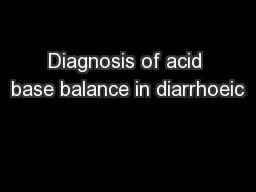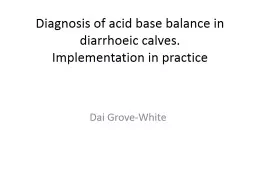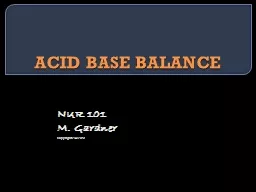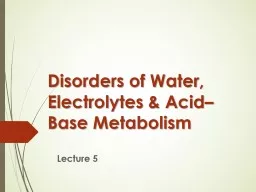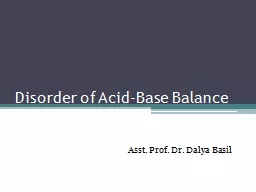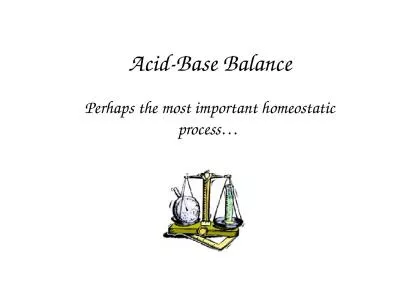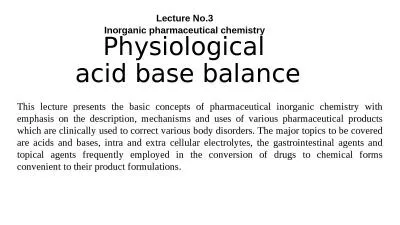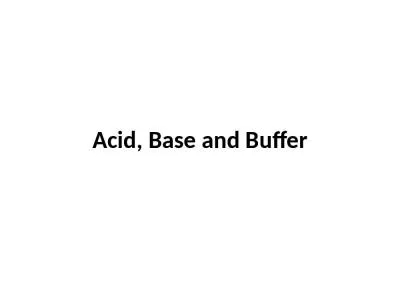PPT-Diagnosis of acid base balance in diarrhoeic
Author : tawny-fly | Published Date : 2018-01-23
calves Implementation in practice Dai GroveWhite A historical perspective William O Shaughnessy 1831 I would expect much benefit from the frequently repeated
Presentation Embed Code
Download Presentation
Download Presentation The PPT/PDF document "Diagnosis of acid base balance in diarrh..." is the property of its rightful owner. Permission is granted to download and print the materials on this website for personal, non-commercial use only, and to display it on your personal computer provided you do not modify the materials and that you retain all copyright notices contained in the materials. By downloading content from our website, you accept the terms of this agreement.
Diagnosis of acid base balance in diarrhoeic: Transcript
Download Rules Of Document
"Diagnosis of acid base balance in diarrhoeic"The content belongs to its owner. You may download and print it for personal use, without modification, and keep all copyright notices. By downloading, you agree to these terms.
Related Documents

